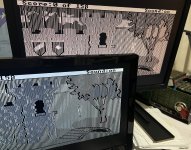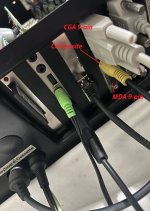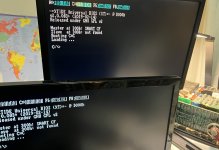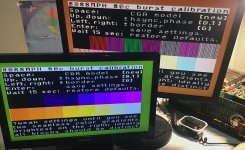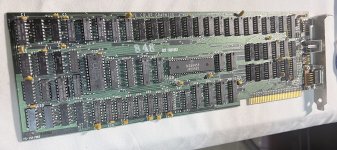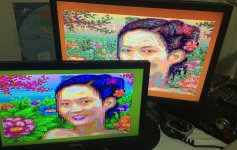3rd times a charm? Found a 1501982 that is working nicely with this Samsung LCD.
However, someone had crossed a couple of the lightpen pins together. I didn't notice it, and the system wouldn't power up with the card inserted (whew! glad no damage - no pop, no smoke, think all is ok). I don't think it was a shipping mishap, so a little mysterious about that. Straightened those pins, started right up, and it looks very good to me!
I just noticed 8088mph shows a baby carriage and bottle for NEW during the startup - with the corrupted screen I had with my "old" CGA, I don't recall being able to tell what the icons were for that. Maybe I'll try that old card again to find out. Although it has the "black" bracket, I kind of think a "new" CGA might be more period correct for a B-model 5150 (1983) ? So I'm ready to just button the case back up again.
And as mentioned, yes CO80 text mode didn't show well on bootup, but BW80 looked just fine for DOS text-mode stuff.
Think it's neat the card has the AMD logo and chip on there. Funny how Intel was first "hey, we can put the video stuff right on our chip" (built in graphics accelerators) and then AMD comes back with "hey we can put processor streams right on our video cards" (Ryzen) haha

I know it's not exactly like that, but from the casual consumer perspective that's what it looks like. Competition is good - something it seems we're forgetting about with these newer trillion dollar companies.
Here's how things compared with composite vs 9-pin CGA out: (looking fowards trying out other "composite-enabled" titles next weekend

including PlanetX )
[ this is the party build - and for the brief moments my "old CGA" was behaved {had sync issues}, it seems the brown was a little better on the old CGA ]


